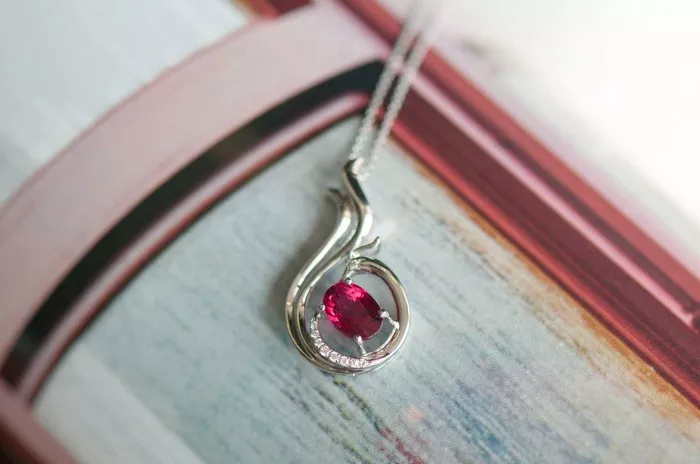When it comes to gemstones, pink tourmaline has gained immense popularity due to its vibrant hues and unique qualities. Among the various sources of pink tourmaline, Nigeria stands out for producing some of the most stunning specimens. However, with the rise in demand, the market has seen an influx of imitations and less authentic stones. This article will guide you through the key aspects of identifying authentic Nigerian pink tourmaline, ensuring you can make an informed purchase.
Understanding Tourmaline: A Quick Overview
Tourmaline is a complex boron silicate mineral that comes in a wide variety of colors. The pink variety, often referred to as rubellite, is highly sought after. Nigerian pink tourmaline is known for its bright and vivid colors, ranging from soft pastels to deep raspberry shades. Each stone has unique characteristics, making it essential to know what to look for when assessing authenticity.
Characteristics of Authentic Nigerian Pink Tourmaline
Color Quality
One of the most striking features of Nigerian pink tourmaline is its color. Authentic stones exhibit:
Vibrancy: The colors are typically vivid and saturated, often appearing almost neon.
Uniformity: Look for stones with consistent color throughout. While some variation is normal, a patchy or dull appearance may indicate a lower-quality stone or an imitation.
Pleochroism: This phenomenon occurs in many tourmalines, allowing them to display different colors when viewed from different angles. Authentic Nigerian pink tourmaline may show a range of hues, including shades of pink, red, and purple.
Clarity and Transparency
Inclusions: Most natural gemstones, including pink tourmaline, contain inclusions. However, authentic Nigerian pink tourmaline tends to have fewer inclusions than stones from other regions. Look for clarity, but remember that some inclusions can add character.
Transparency: Authentic stones should be transparent to semi-transparent. If a stone appears too opaque, it may not be genuine.
Cut and Shape
The cut of a gemstone greatly affects its brilliance and overall appearance. When examining pink tourmaline:
Quality of Cut: Authentic stones should have a well-executed cut that enhances their color and brilliance. Look for symmetry and proportion in the facets.
Shapes: Nigerian pink tourmaline is often cut into various shapes, including oval, round, and cushion cuts. Each shape has its unique appeal, but the cut should always enhance the stone’s natural beauty.
Size and Weight
Authentic Nigerian pink tourmaline is available in various sizes, but larger stones tend to be rarer. If you encounter a notably large pink tourmaline at a low price, it may raise suspicion. Keep in mind:
Carat Weight: Authentic stones usually weigh less than their synthetic counterparts, which are often heavier.
Pricing: A genuine, high-quality Nigerian pink tourmaline will have a price tag to match its rarity and quality. Be wary of deals that seem too good to be true.
Tests to Identify Authentic Pink Tourmaline
Visual Inspection
Start with a thorough visual examination. Use a jeweler’s loupe (a magnifying glass) to inspect the stone closely. Look for:
Surface Characteristics: Authentic stones may show some wear, such as tiny scratches or scuffs, indicating they are genuine and not artificially manufactured.
Bubbles: If you see bubbles within the stone, it’s likely a synthetic or glass imitation.
Refractive Index Test
Tourmaline has a specific refractive index that can be measured using a refractometer. Authentic pink tourmaline has a refractive index of approximately 1.62 to 1.64. If you have access to this tool, it can help confirm the authenticity of the stone.
Hardness Test
Pink tourmaline ranks 7 to 7.5 on the Mohs scale of hardness. You can perform a scratch test (carefully!) against a material with a known hardness. If the stone scratches easily, it may not be genuine.
Professional Appraisal
When in doubt, seek the expertise of a certified gemologist. They can conduct a comprehensive examination using specialized equipment and provide you with an official appraisal. This step is especially important for high-value stones.
See Also: What Zodiac Can Wear Pink Tourmaline?
Buying Tips for Authentic Nigerian Pink Tourmaline
Research Reputable Sellers
When purchasing pink tourmaline, always opt for established and reputable gem dealers. Look for:
Certifications: Sellers should provide documentation, such as certificates of authenticity from recognized gemological laboratories.
Customer Reviews: Check online reviews and testimonials to gauge the seller’s credibility.
Ask Questions
Don’t hesitate to ask the seller about the stone’s origin, treatment, and any other relevant details. A trustworthy seller should be transparent about the stone’s history.
Trust Your Instincts
If something feels off about a stone, trust your instincts. Whether it’s the color, clarity, or price, if it doesn’t seem right, consider walking away.
Conclusion: The Allure of Authentic Nigerian Pink Tourmaline
Identifying authentic Nigerian pink tourmaline requires a combination of knowledge, keen observation, and sometimes professional assistance. By understanding the key characteristics, employing tests, and following prudent purchasing practices, you can confidently navigate the world of pink tourmaline.
Owning a genuine piece of Nigerian pink tourmaline not only adds beauty to your collection but also connects you to the rich natural resources of Nigeria. With its stunning hues and unique properties, authentic pink tourmaline is a treasure worth seeking.
Invest wisely, and let your journey into the world of gemstones be as vibrant and beautiful as the stones themselves.
Related topics:
- What Uses Does Black Tourmaline Have in Astrology?
- Tourmaline Black Beads: A Guide to Their Market Value
- Green vs. Pink Tourmaline: Unique Features and Benefits


